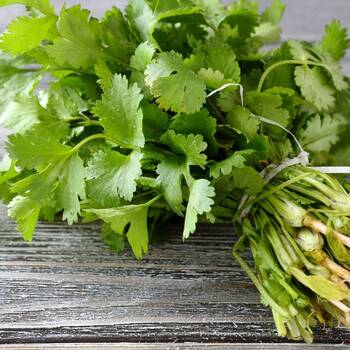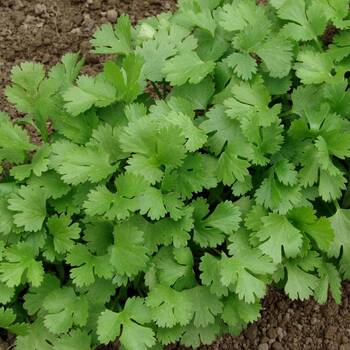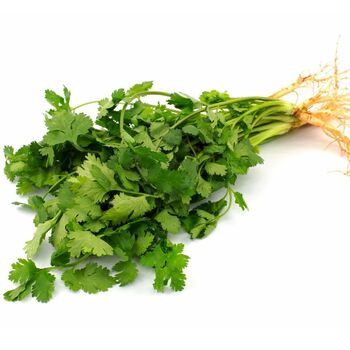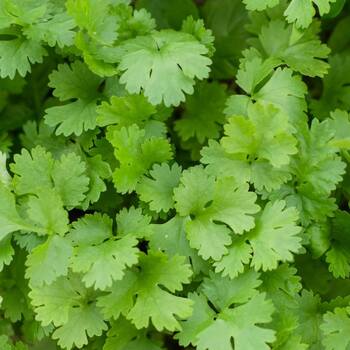
How to Grow Coriander Seeds
Grow Guide #2254
Family: Apiaceae
Binomial name: Coriandrum sativum
Life Cycle: Annual
This 'How to Grow' guide details everything a home gardener needs to know to plant, grow and care for Coriander (Coriandrum sativum).
When to Sow Coriander Seeds
Coriander can be grown year-round in most climates. Avoid planting in extremely hot or cold weather which can affect germination and growth. Use the table below to identify the best time of year to sow coriander in your climate.
| JAN | FEB | MAR | APR | MAY | JUN | JUL | AUG | SEP | OCT | NOV | DEC | |
|---|---|---|---|---|---|---|---|---|---|---|---|---|
| Cool | ||||||||||||
| Temperate | ||||||||||||
| Sub-Tropical | ||||||||||||
| Tropical | ||||||||||||
| Arid |
Preparation
Coriander plants are best grown in full sun or part shade. Choose a location that will receive at least 3 hours of full sun each day.
Coriander plants need a well drained soil enriched with plenty of organic matter. Prepare soil by weeding it thoroughly, digging it over to loosen it and adding aged animal manure or compost. Keep the area free of weeds until planting. Learn more about preparing soil for planting here.
Coriander plants can be grown in containers. If possible choose a variety that’s recommended for container growing. Use a good quality potting mix and make sure your container is large enough for mature plants; a minimum of 10 litres is recommended for coriander. During the growing season, keep in mind that container grown plants may need additional fertiliser to encourage healthy growth.
How to Sow Coriander Seeds
Coriander seeds do not require any treatment (eg soaking, stratification) before sowing.
Coriander seeds grow best when they are sown directly into the garden.
- Sow seeds directly in the garden 6mm deep and 20cm apart, with rows 20cm apart.
- Keep soil moist but never wet or dry.
- Seeds should germinate in around 7-14 days at a soil temperature of 18-21°C.
- Young seedlings will need protection from pests, pets and weather until they are established.
Coriander grows best when temperatures are even and moderate. Coriander will bolt in very hot weather. Do not transplant seedlings or sow seeds outside in very warm temperatures, and provide shade in the heat of summer.
Coriander is also sensitive to frost. In cool climates, do not sow outside until all danger of frosts has passed.
Tip: Coriander seeds can also be sown in the less formal ‘scatter seed’ method. Simply roughen the soil, scatter seeds evenly over the surface, then smooth the soil over lightly to cover the seeds.
How to Grow Coriander
Coriander plants need regular watering during the growing season. Do not let soil dry out; keep soil evenly moist but not waterlogged. Water deeply in the early morning or late afternoon. Avoid watering the leaves of plants to avoid fungal diseases. Learn more about watering here.
If soil was well prepared no extra fertiliser should be necessary. In poor soil or to give your plants an extra boost, application of a high-nitrogen fertiliser or one formulated for leafy greens or herbs can be beneficial:
- Apply slow release fertiliser at the recommended rate when transplanting or when seedlings are 5-10cm tall.
- Apply liquid fertiliser at the recommended rate and frequency during the growing season.
Optional: To give plants room to grow, thin seedlings when they are large enough to handle. Pull out any weak or small seedlings so plants are spaced about 20cm apart.
If growing for leaves and roots: To prolong the life of the plant, remove flower stalks as soon as they appear.
If growing for seed: Let the plant flower and develop a full seed head.
How to Harvest Coriander
Coriander should be ready to harvest in approximately 30-45 days.
Leaves are ready to harvest when they are large enough to eat, and can be harvested as needed. Harvest leaves by pinching off the outer leaves, leaving some on the plant for future growth. Whole plants can also be harvested. Coriander leaves should be eaten soon after harvest. Leaves can be stored short term in a perforated plastic bag in the fridge.
Roots are ready to harvest when they are large enough to eat. Harvest roots by gently pulling at the base of the plant to uproot it, or use a garden fork to lift the whole plant from the ground. Roots are best eaten soon after harvest. Roots can be stored short term in a perforated plastic bag in the fridge.
Seed is ready to be harvested after the seed heads have dried. Remove the head, and uproot and discard the rest of the plant. Place the seed head somewhere cool, dry, and airy until they are dry and they have turned from green to beige. Stored in an airtight container.
Common Problems when Growing Coriander
Like all plants, coriander is susceptible to some pests, diseases and other problems. Below is a list of the most common problems gardeners encounter when growing coriander plants:
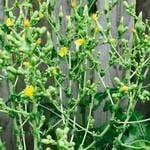 Bolting is when a plant prematurely flowers and goes to seed. Bolting can be caused by a period of extreme weather. Avoid sowing seed until after the danger of frosts has passed or in very hot weather. Water plants regularly and deeply in hot weather to prevent them suffering heat stress.
Bolting is when a plant prematurely flowers and goes to seed. Bolting can be caused by a period of extreme weather. Avoid sowing seed until after the danger of frosts has passed or in very hot weather. Water plants regularly and deeply in hot weather to prevent them suffering heat stress.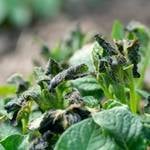 Frost damage can cause leaves to wilt and go black. Do not plant seedlings in the garden until all danger of frost has passed in spring, and harvest plants before winter. Prune all frost-damaged leaves to avoid them rotting on the plant.
Frost damage can cause leaves to wilt and go black. Do not plant seedlings in the garden until all danger of frost has passed in spring, and harvest plants before winter. Prune all frost-damaged leaves to avoid them rotting on the plant. Slugs and snails are molluscs that feed on tender leaves and shoots, mostly at night, leaving slimy trails behind them. Control them by removing their hiding places, keeping free range poultry, collecting them by torchlight or by placing traps. Read more about slugs and snails here.
Slugs and snails are molluscs that feed on tender leaves and shoots, mostly at night, leaving slimy trails behind them. Control them by removing their hiding places, keeping free range poultry, collecting them by torchlight or by placing traps. Read more about slugs and snails here.


.png)



